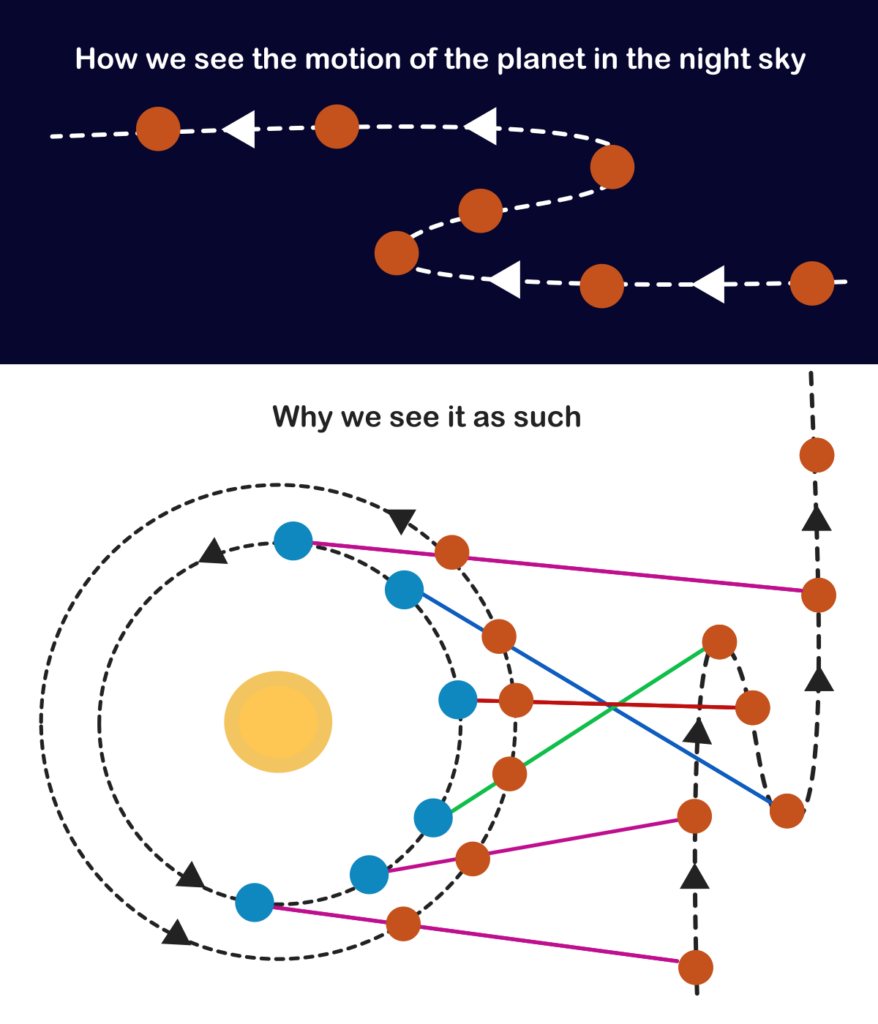Last Reviewed and Updated on August 6, 2022
If you observe planets in the night sky, you might have noticed at times; they appear to start moving in the opposite direction, a phenomenon called retrograde motion. Let’s explore what happens during the apparent retrograde motion of a planet.
What is retrograde motion?
In astronomy, retrograde motion is the motion of an object in a direction that is opposite to the central object. This can apply to the rotation or orbit of a planet, moon, or other objects. Prograde motion is the more “normal” motion.
Some bodies in our solar system exhibit such motion. Venus and Uranus, for example, rotate around their axis in a different direction than other planets in our solar system and the Sun.
Most moons in our Solar System have a prograde rotation around their planets. Triton, the largest moon of Neptune, on the other hand, has a retrograde orbit. All other moons of Neptune orbit the planet in the counterclockwise direction, while the orbit of Triton is clockwise.
Now apparent retrograde motion is something else… With this motion, the object rotates or orbits in one direction, then appears to change direction for a while and change it yet again.
What happens during the apparent retrograde motion of a planet
The answer is nothing. Nothing out of the ordinary happens during the apparent retrograde motion of a planet. The planet moves along its orbit in the same way as it always does.
But we do perceive the motion of the planet differently as the universe is presenting us with an amazing optical illusion.

The apparent motion isn’t a real change in the direction in which the planet moves along its orbit. The motion just appears to change course because of the relative positions of the planet Earth and the planet we are observing and how the two are moving around the Sun.
This happens because one planet, Earth, for example, moves faster than the other, Mars, for example, and the faster planet catches up with the slower one, which makes it look like Mars starts moving backward as Earth passes it. The perceived change is relative to our motion.
Finding it hard to imagine how this works? Think about two cars on the road, one driving faster and one slower. If you drive the faster car and start overtaking the slower one on the road, as you pass by the slower car, it will appear as if the slower car is moving backward from your point of view. And this is exactly what happens during the apparent retrograde motion of a planet.
Can we see observe this with all planets?
Yes. This optical illusion can be observed in all planetary bodies. With planets that are outside Earth’s orbit, the Earth periodically overtakes them (is faster, passes by them). The more distant the planet, the more frequently this is observed.
The inner planets (Mercury and Venus) appear to move in retrograde in a similar mechanism.
Why is this motion important?
This appeared change of direction is what led ancient astronomers to identify and name these objects planets. They observed these bodies behave differently than other objects in the sky. The word planet comes from the Greek word for “wanderer.”
Love learning about space? Check out our list of facts about space.
